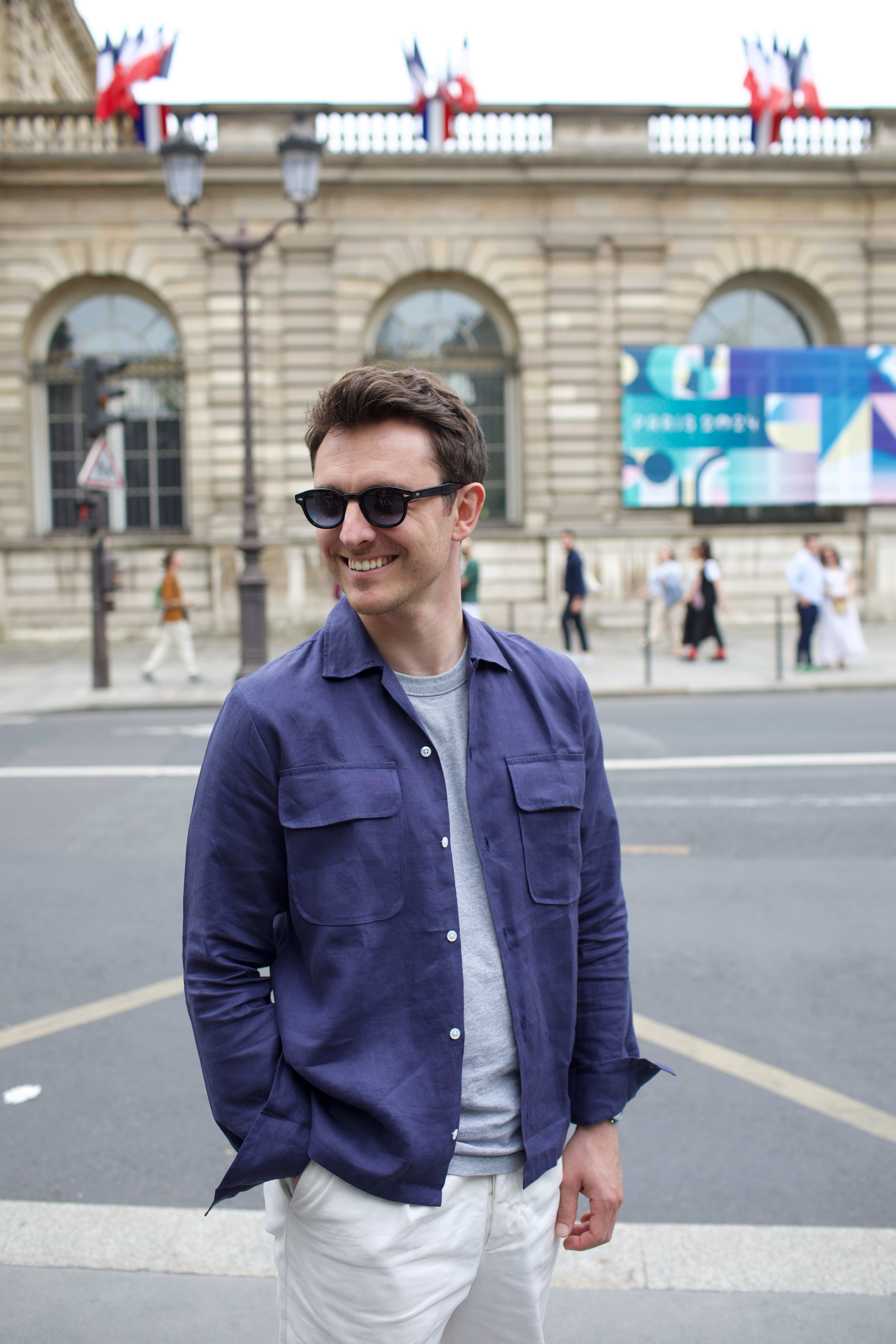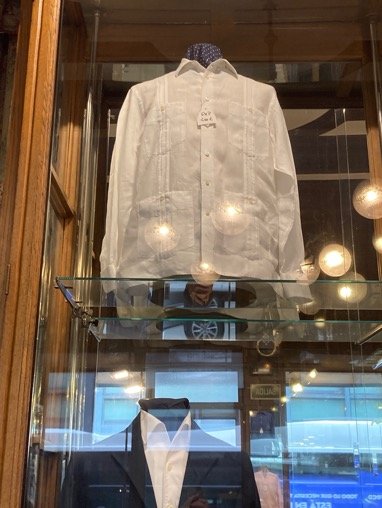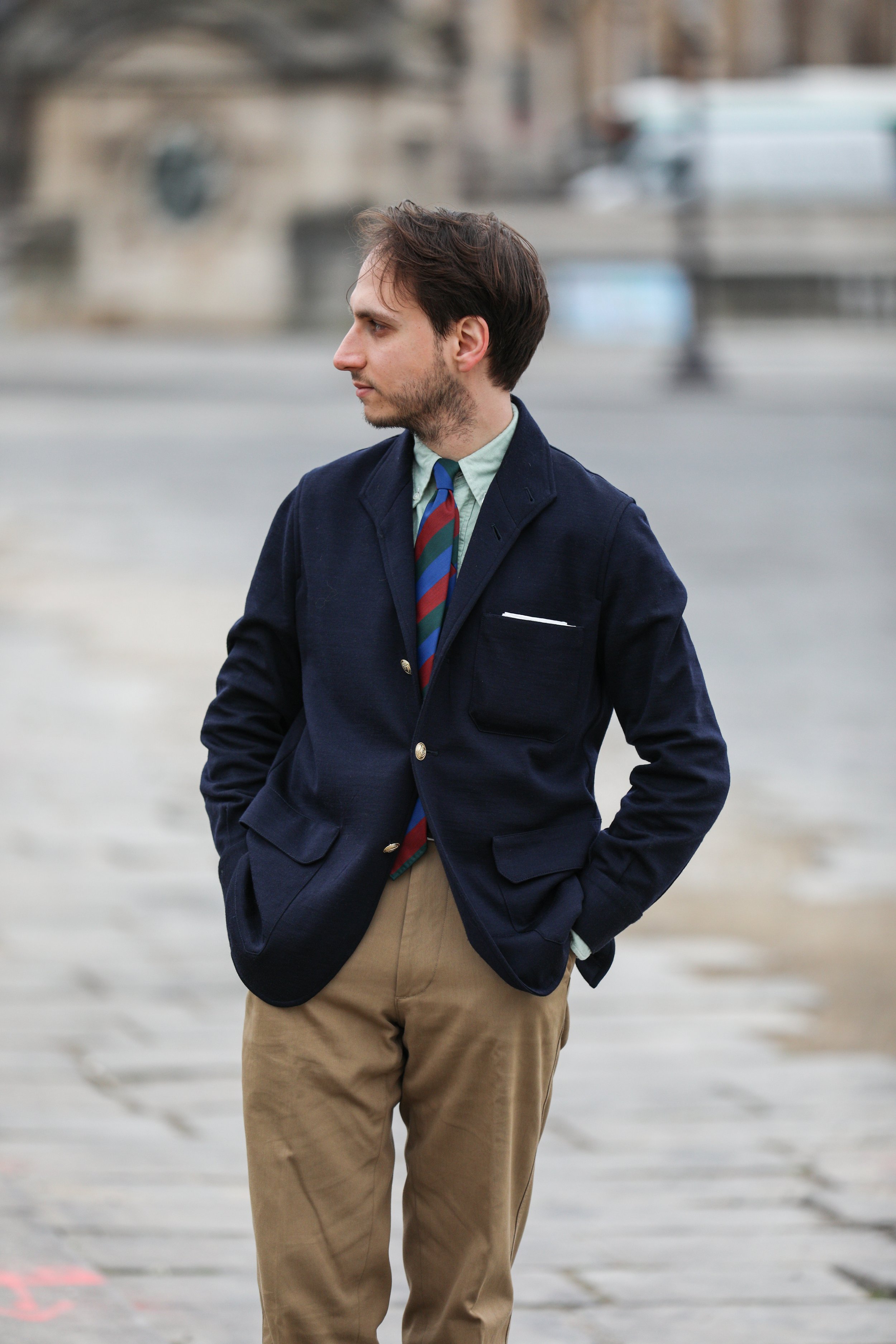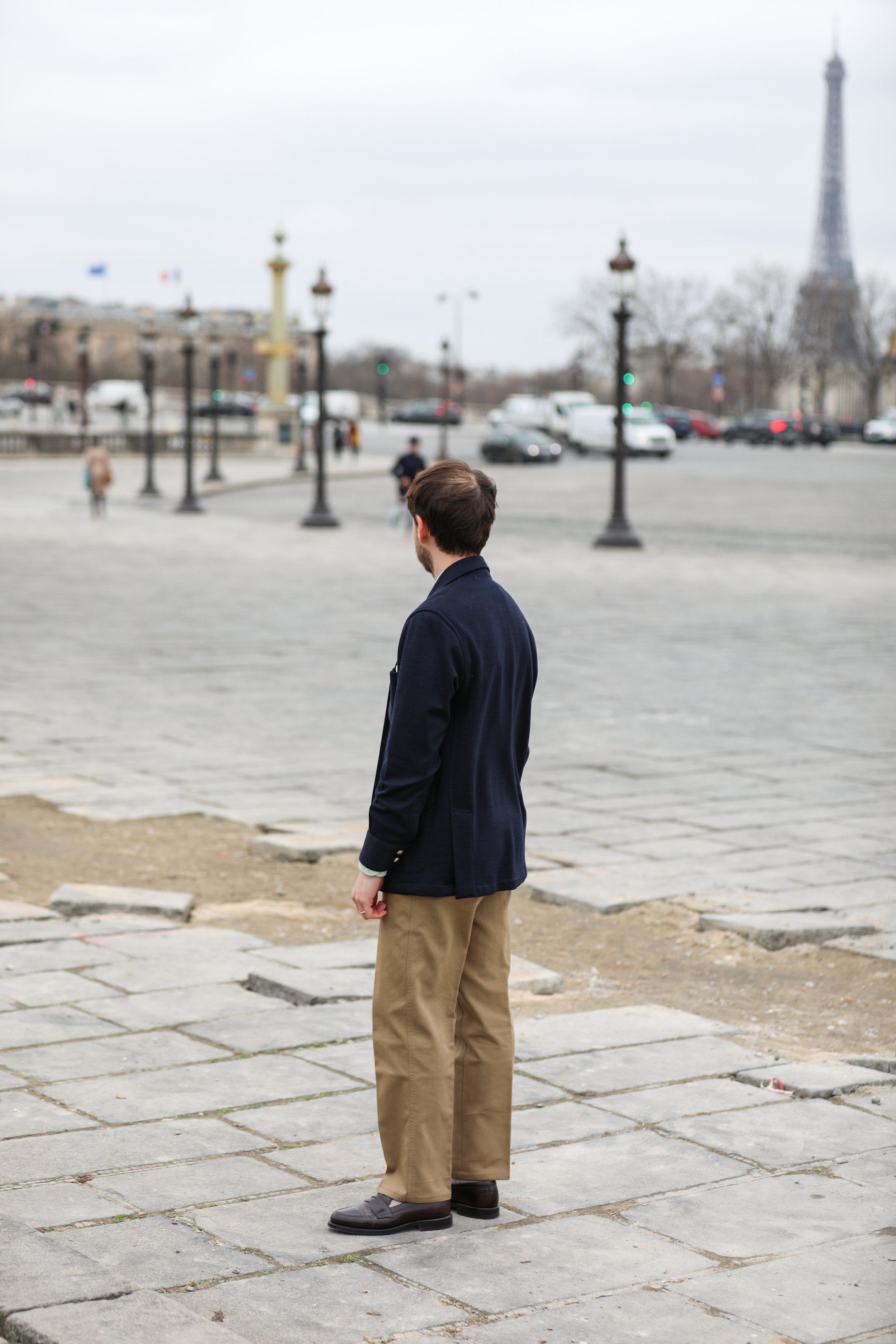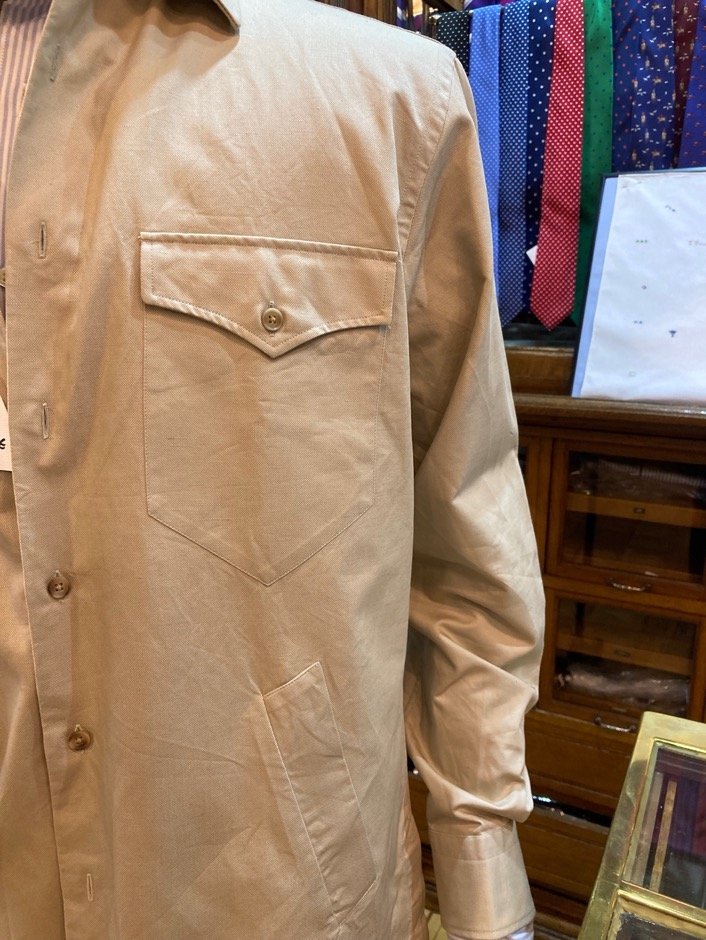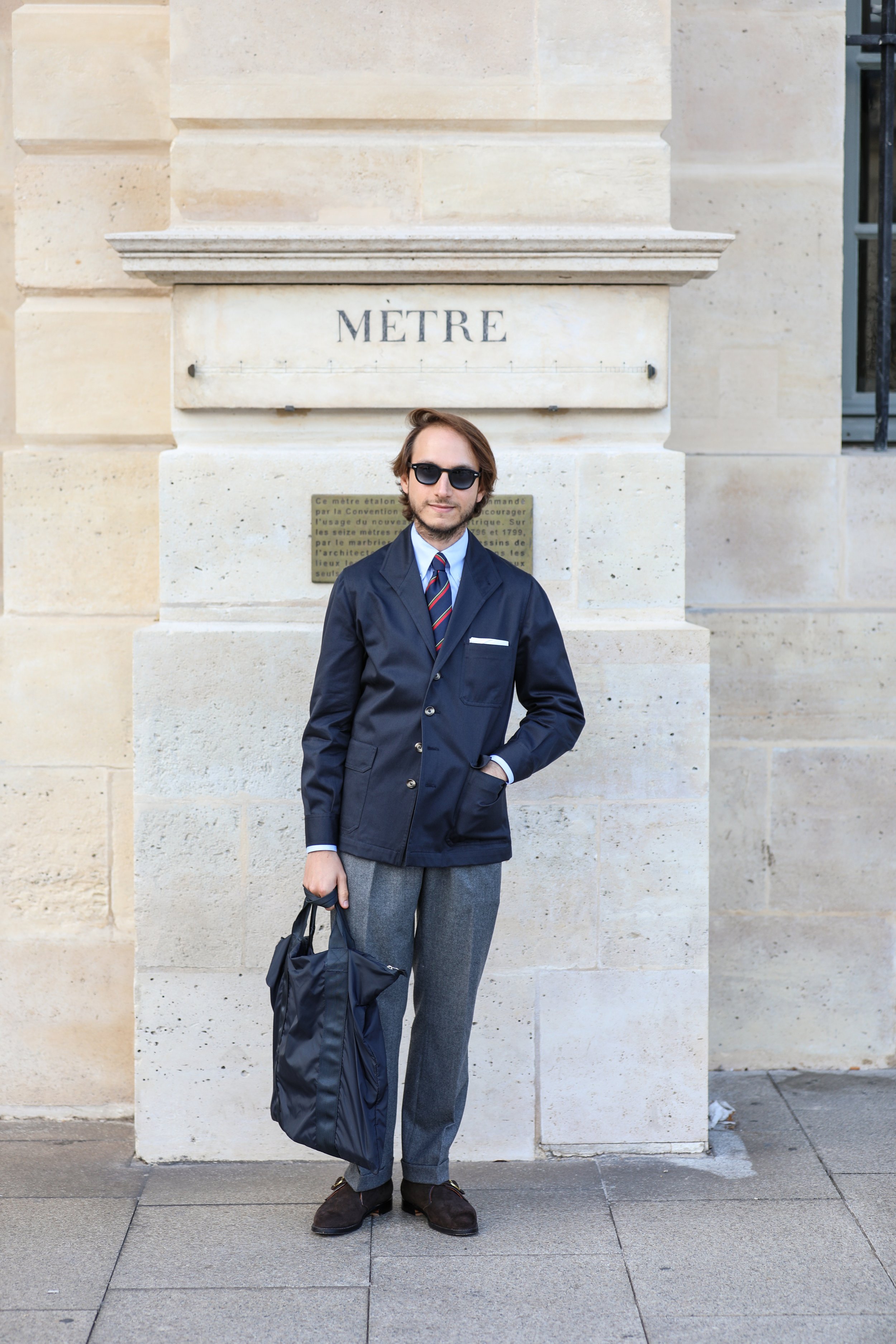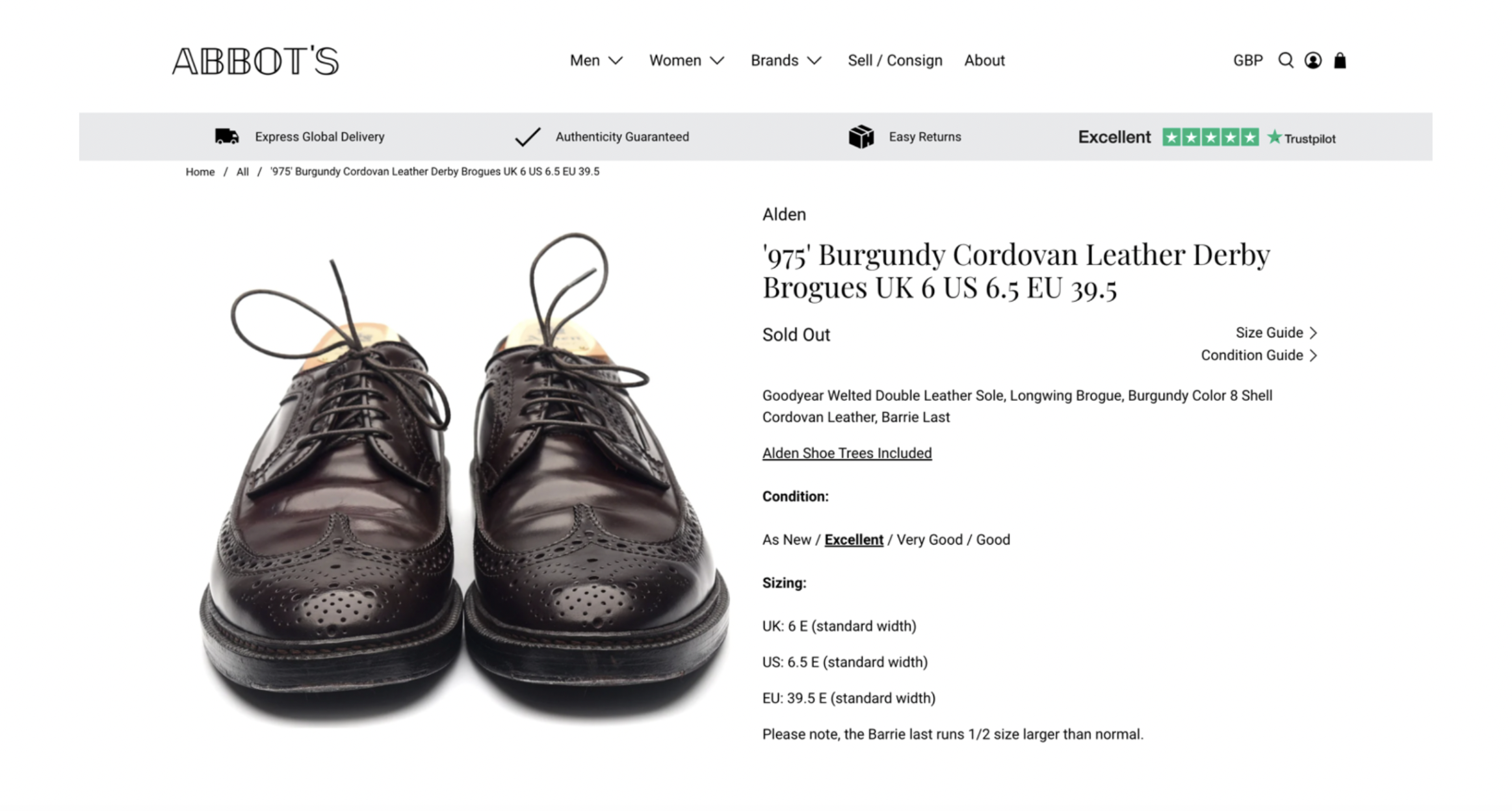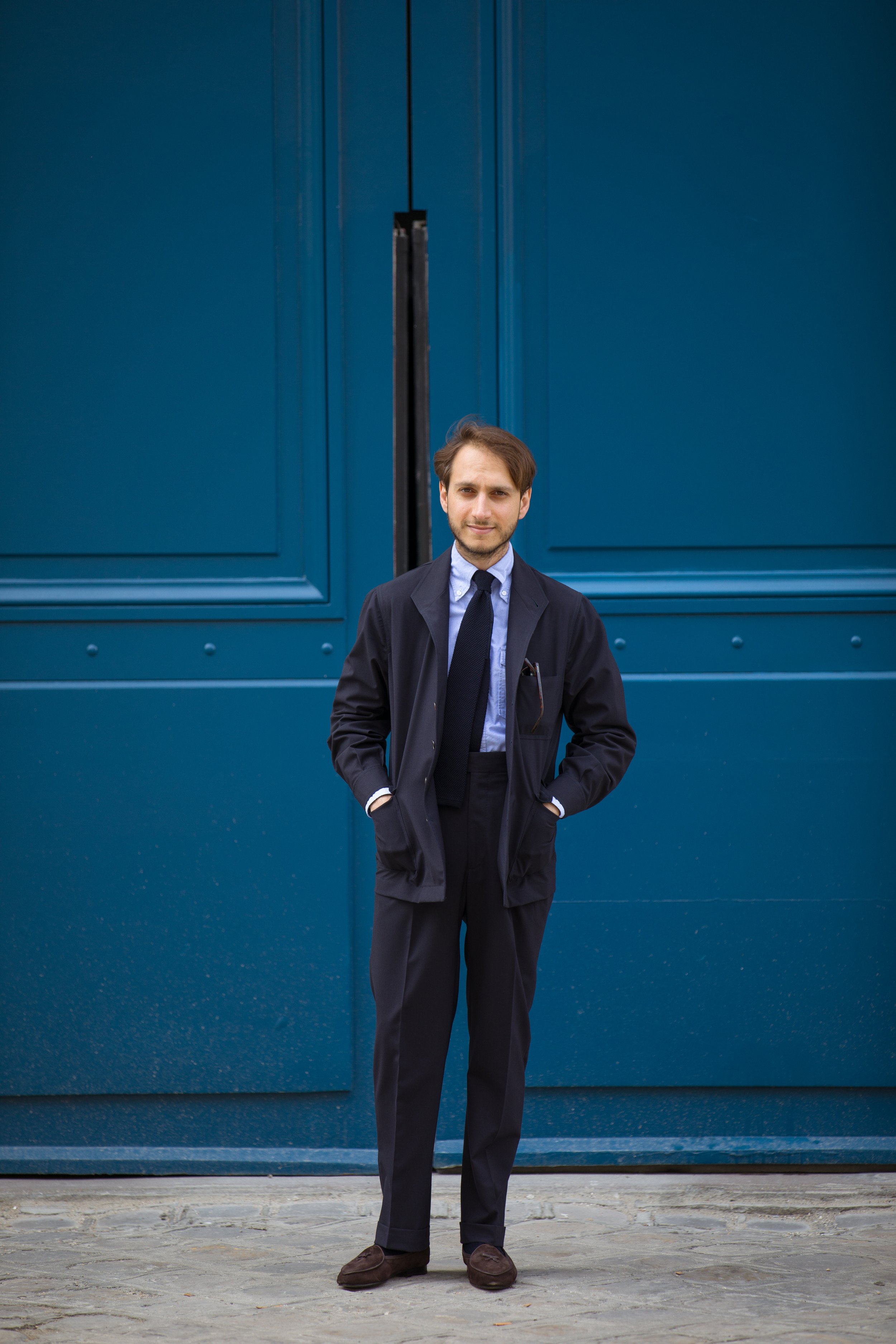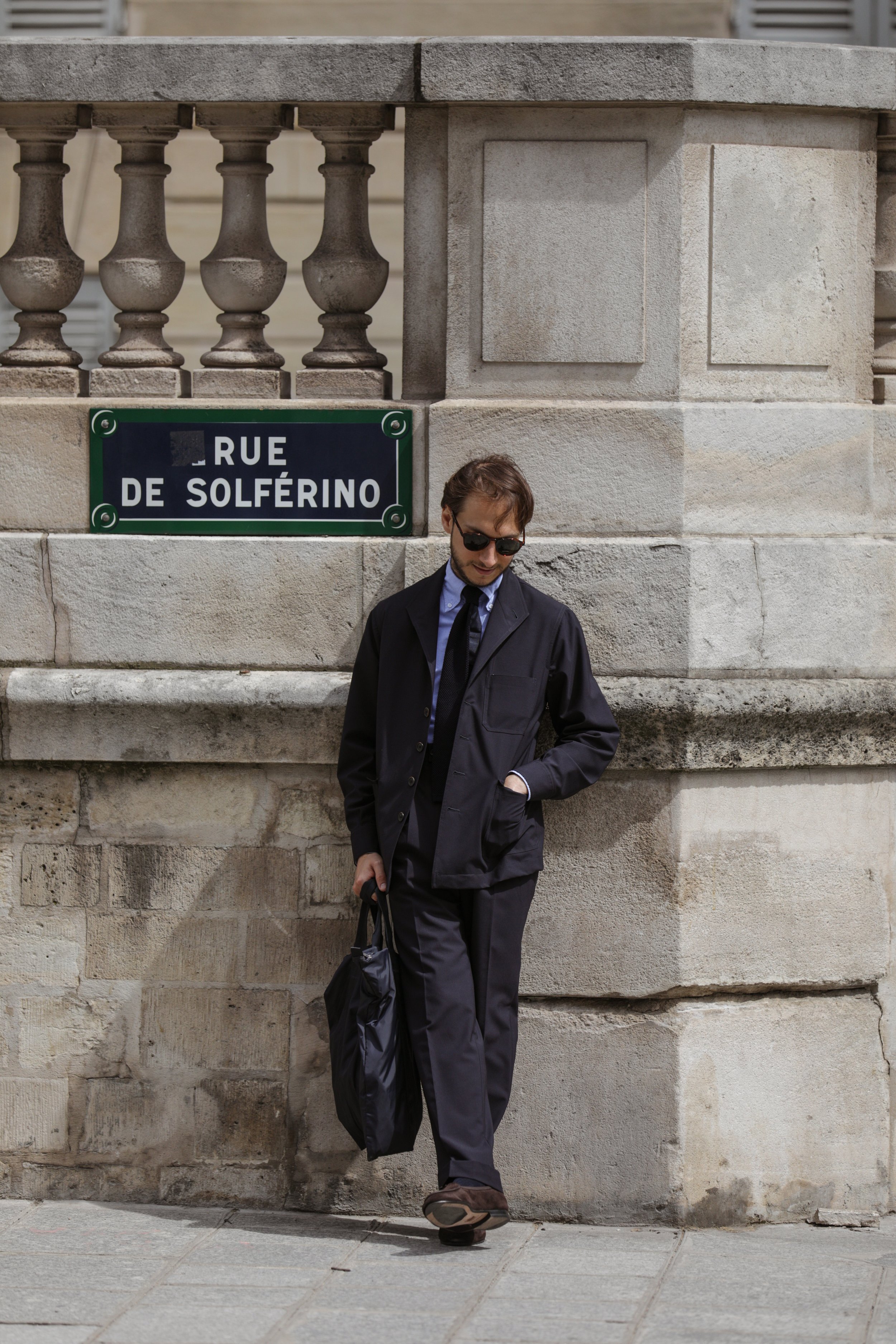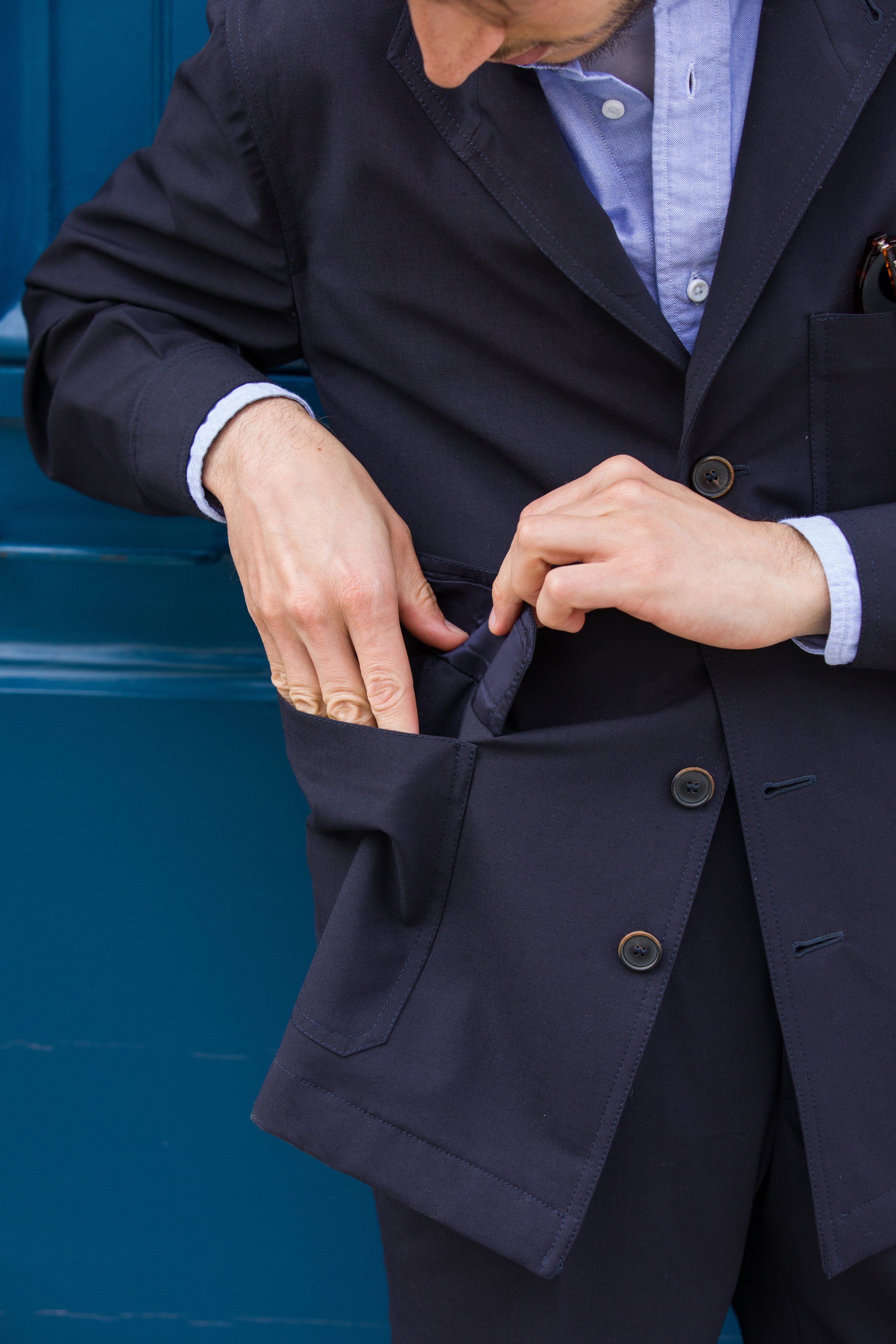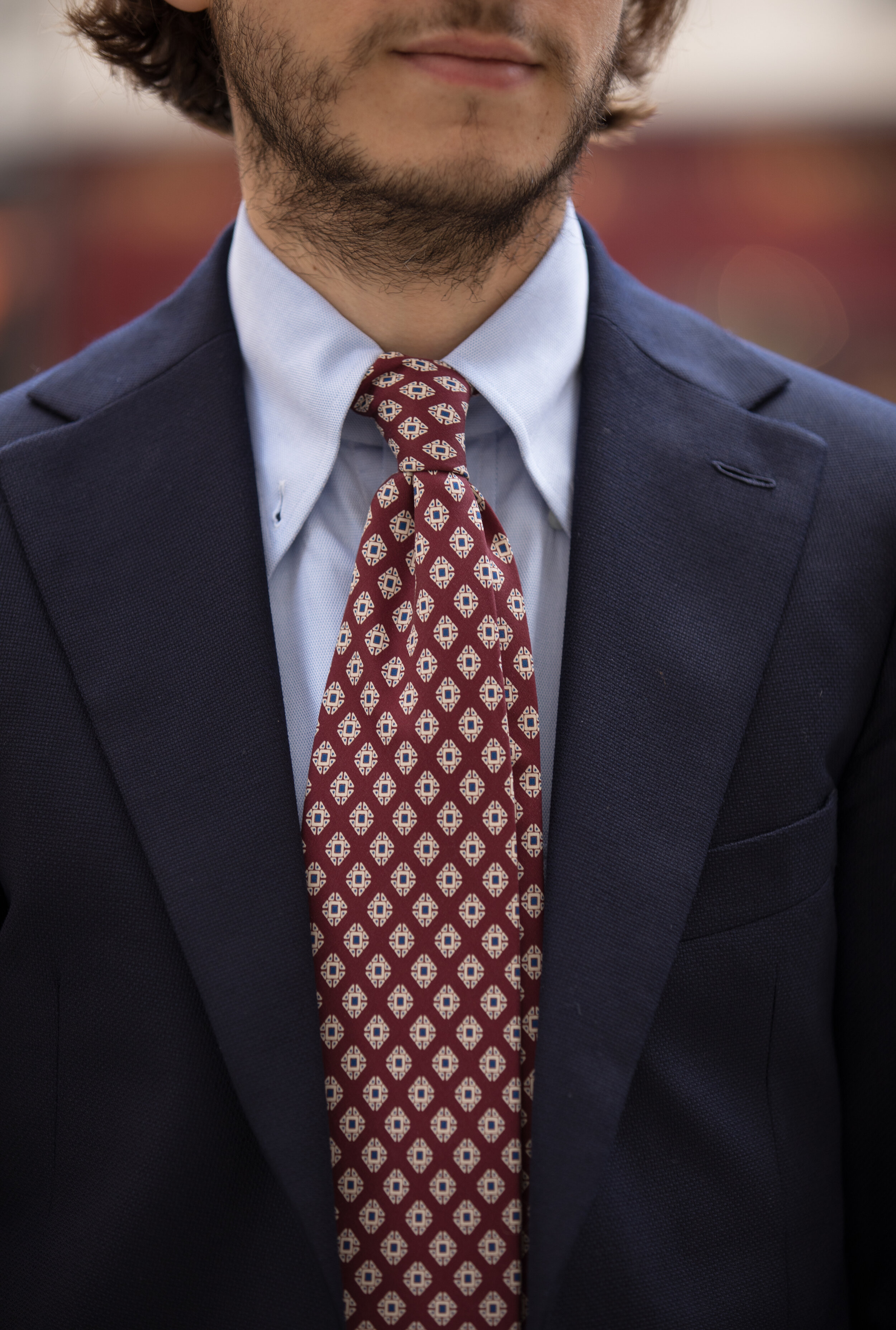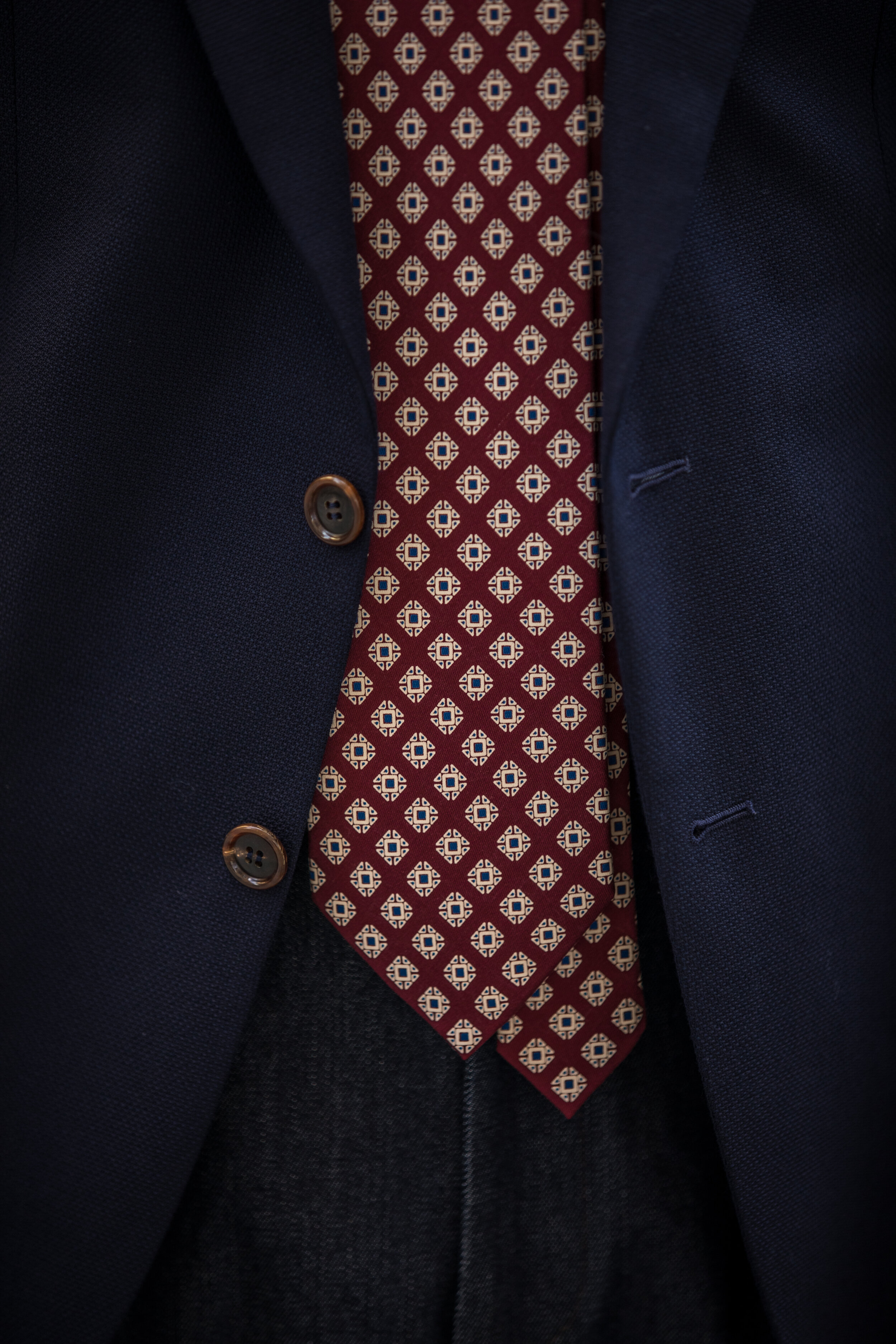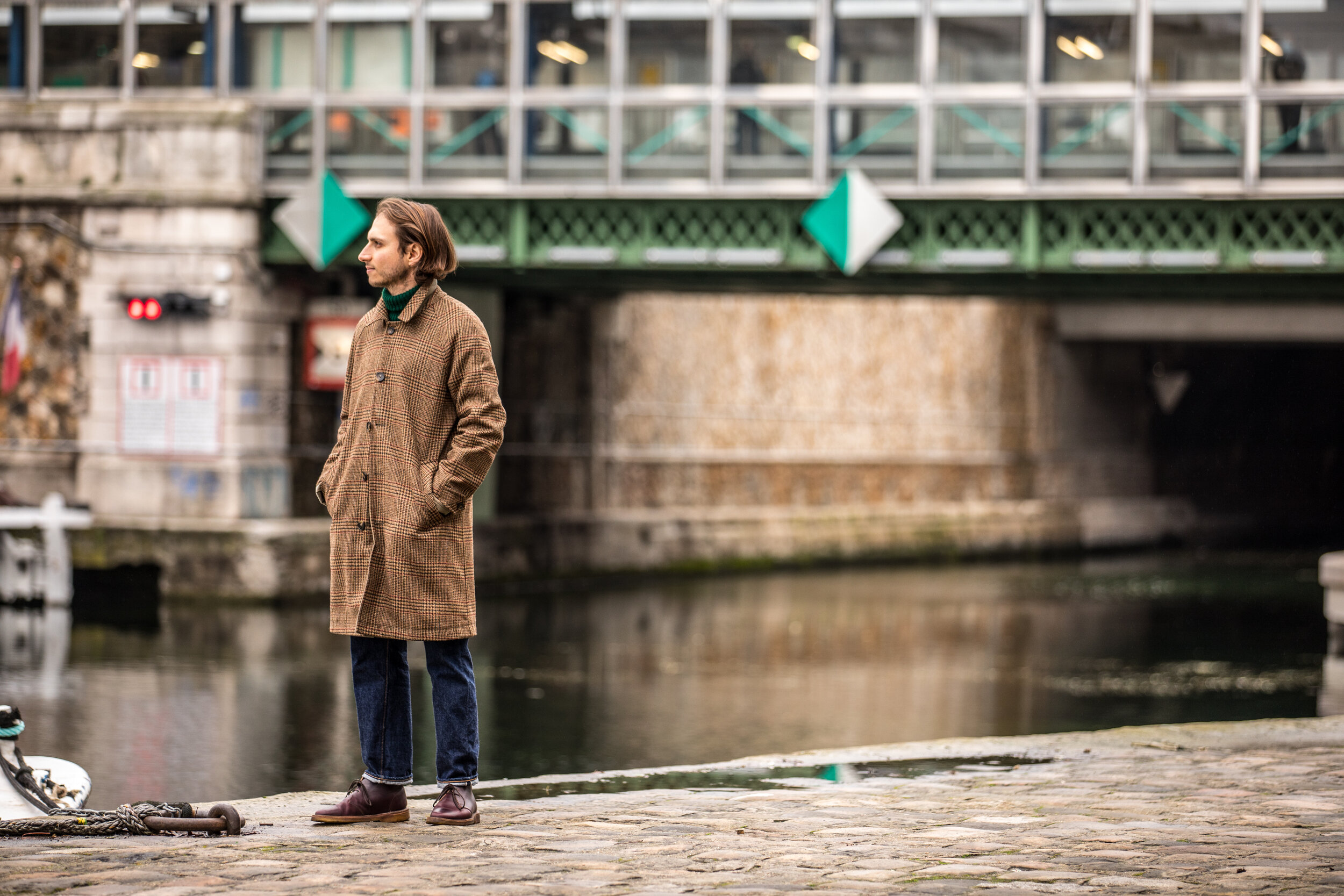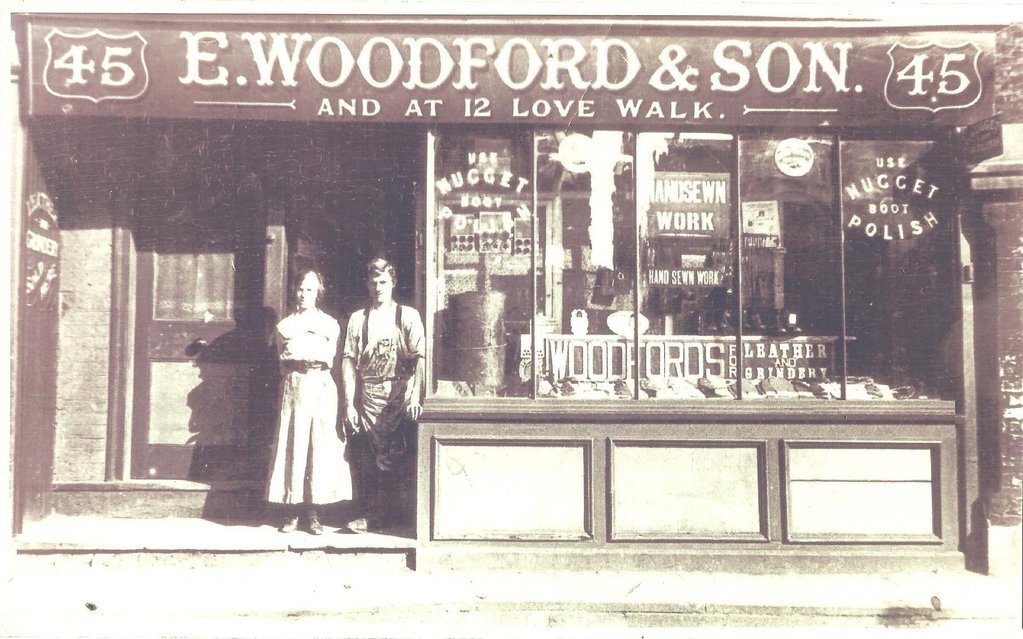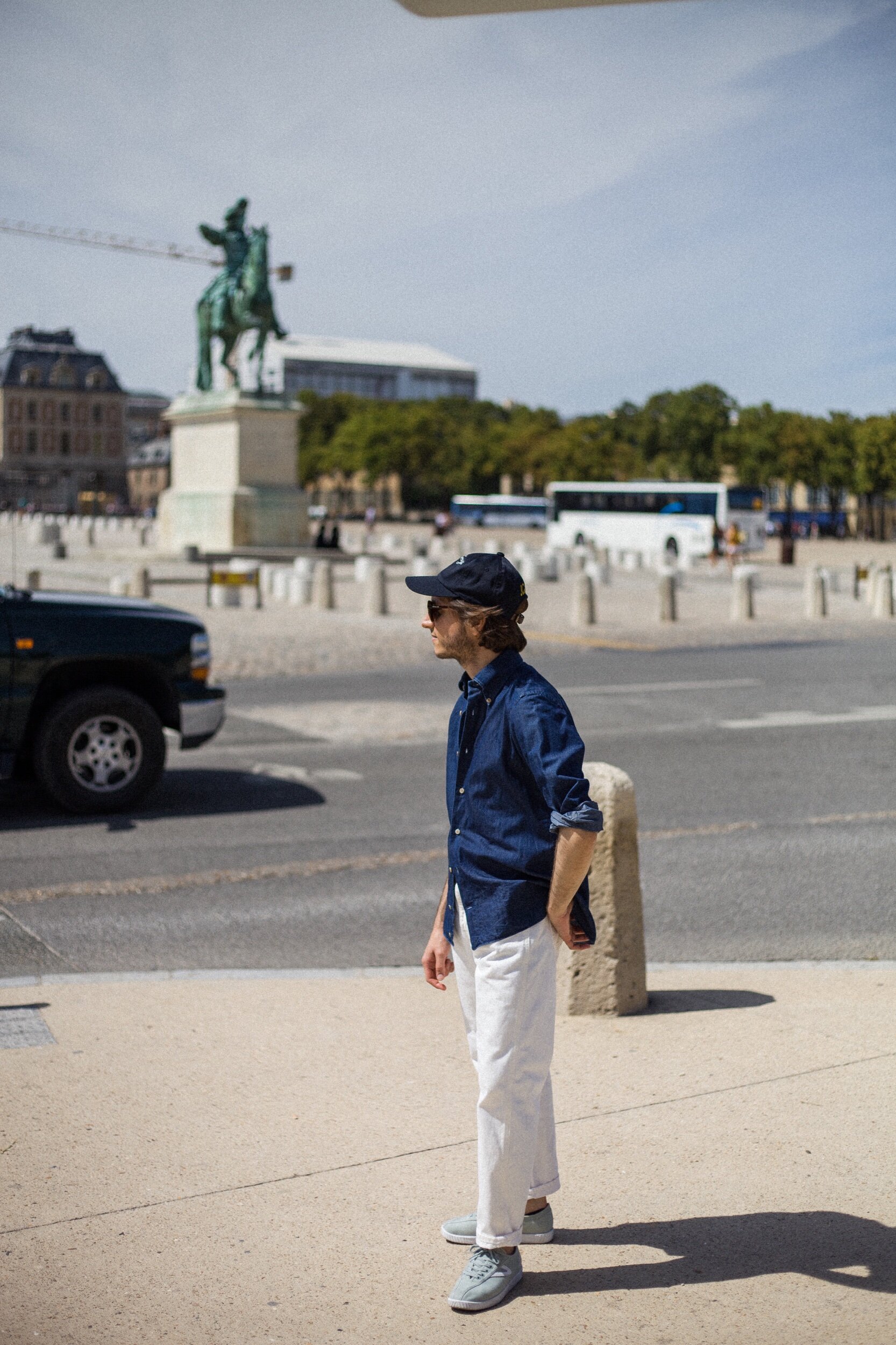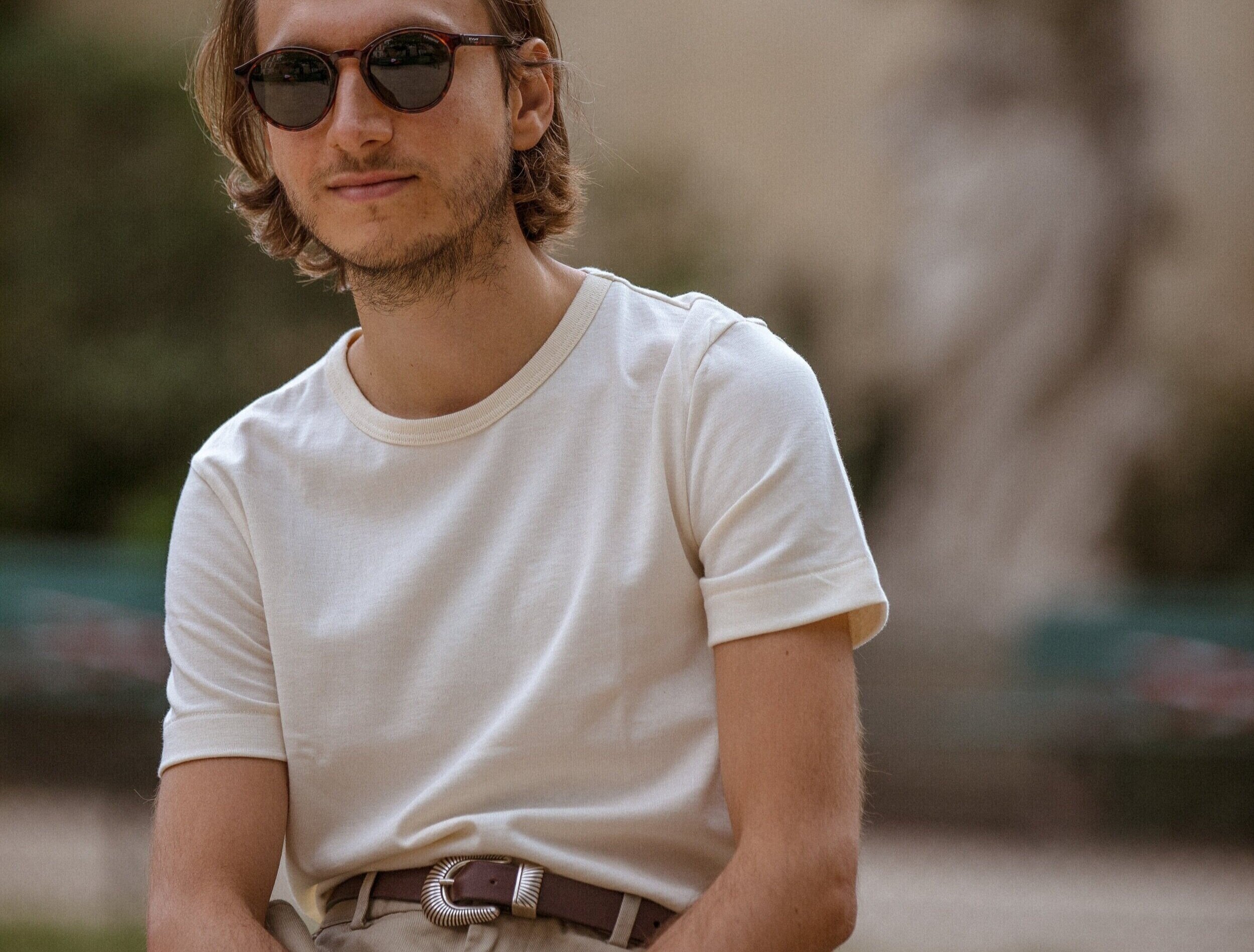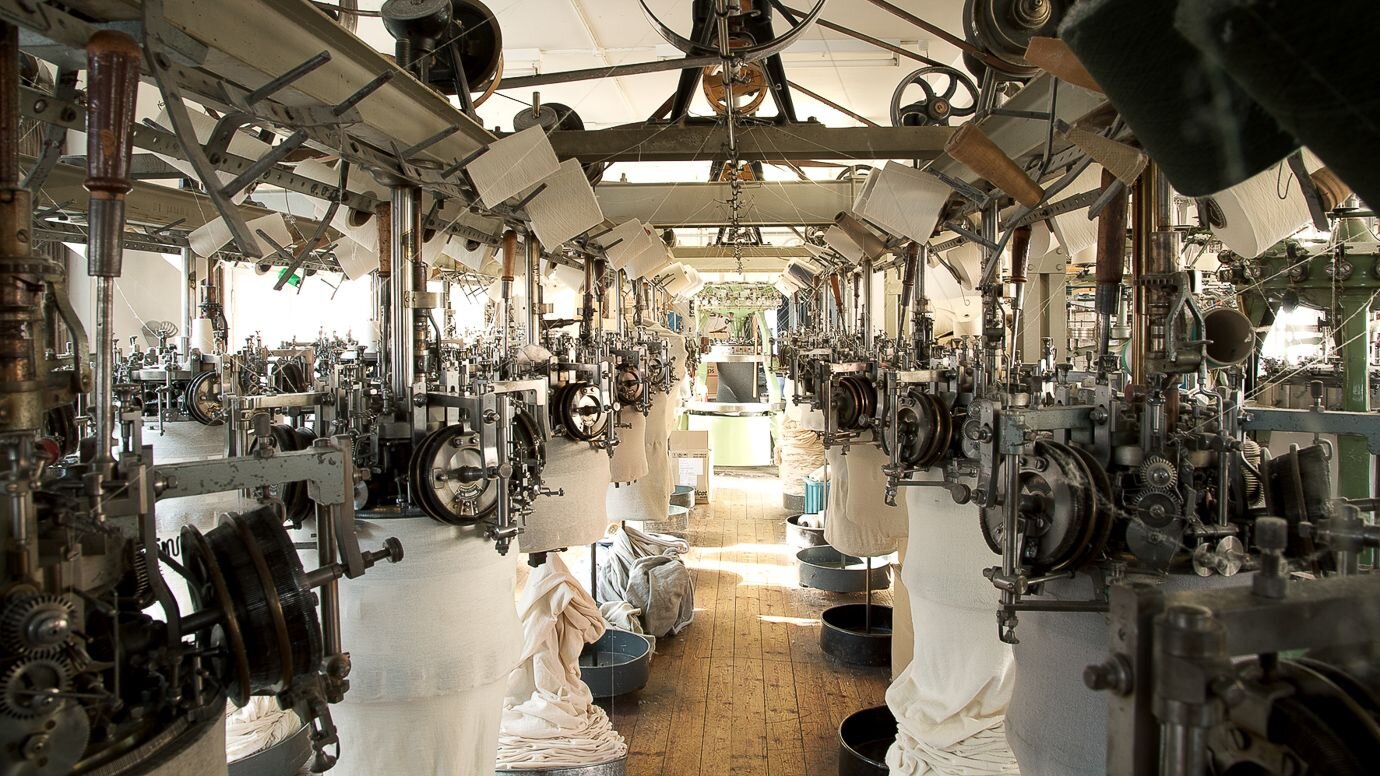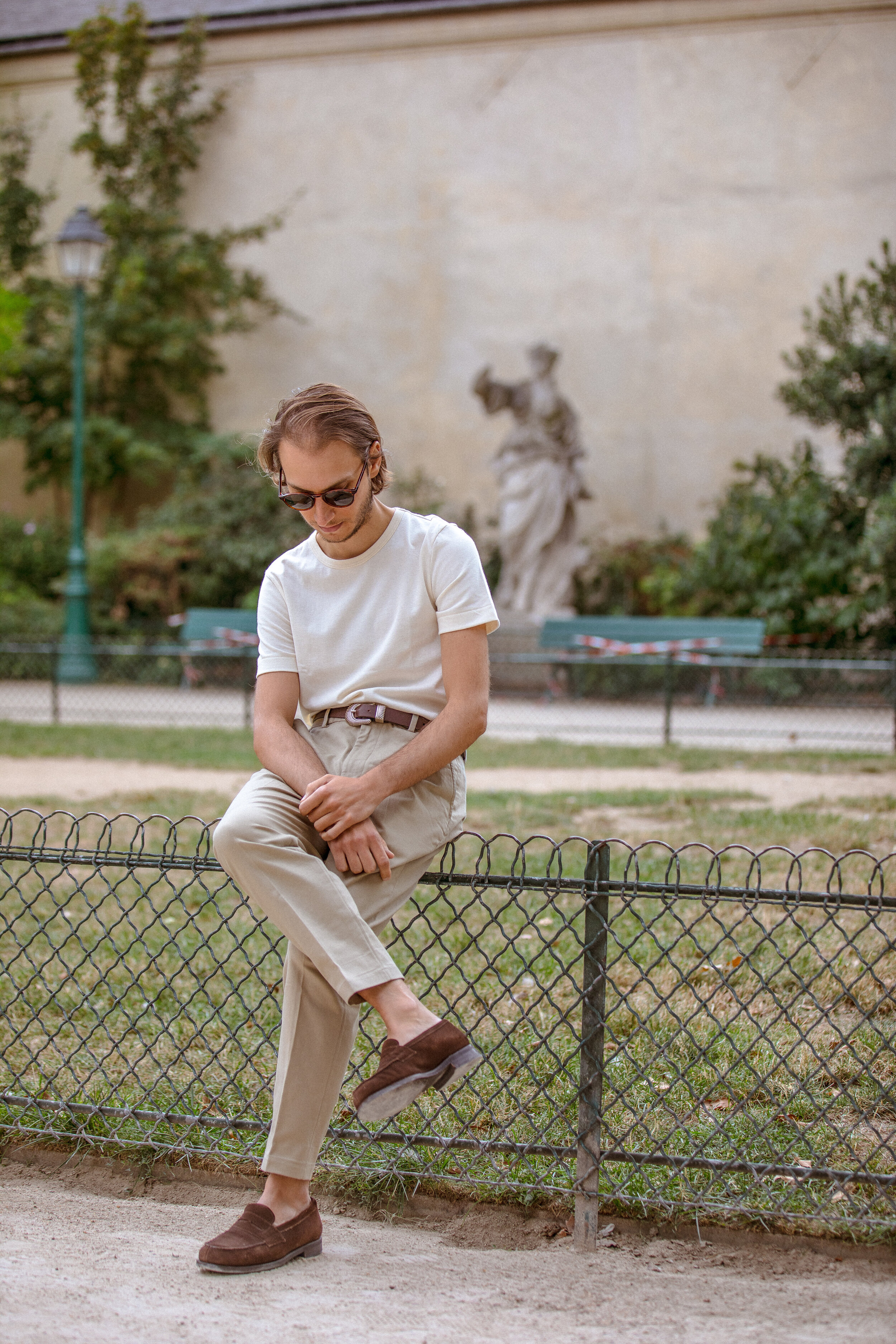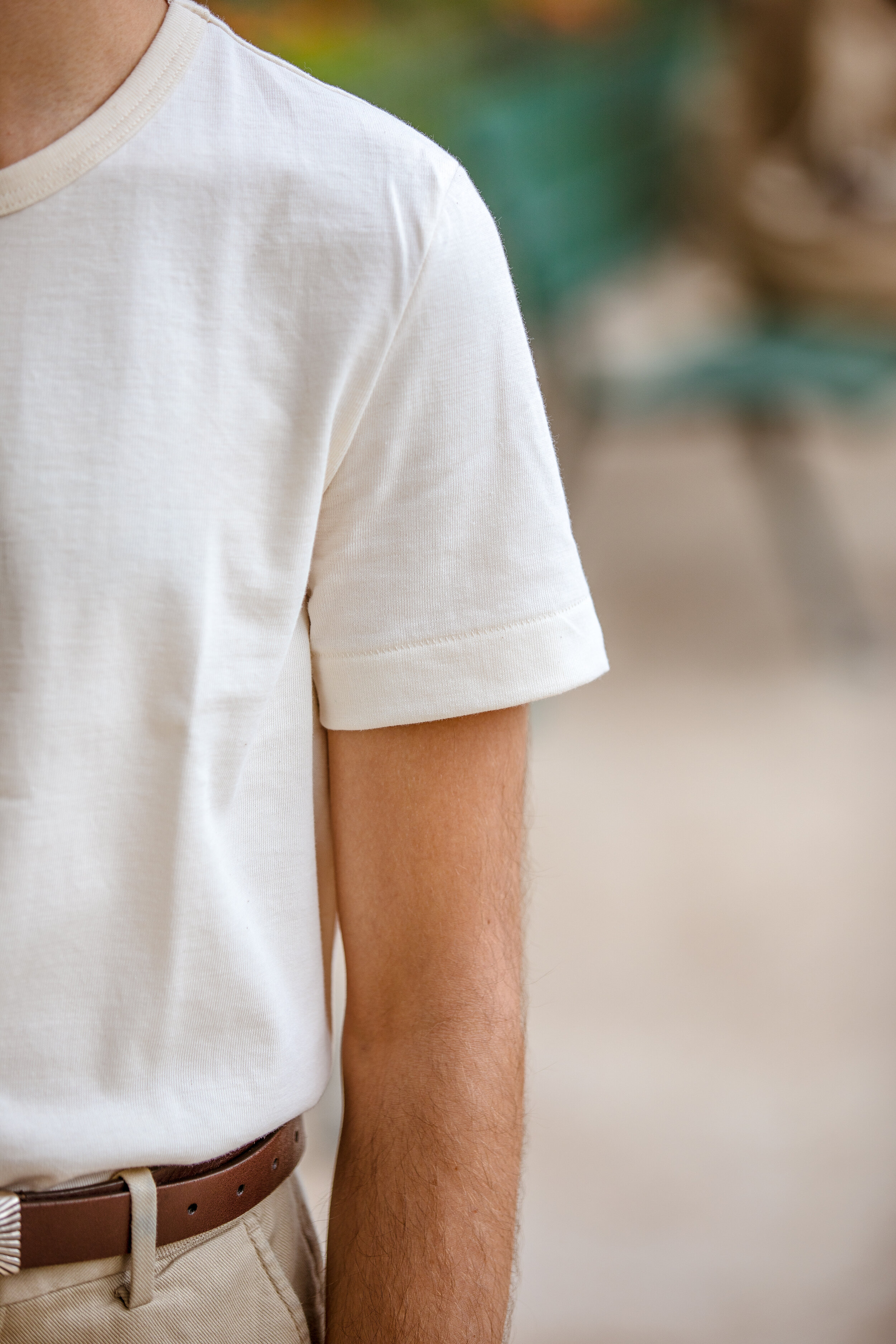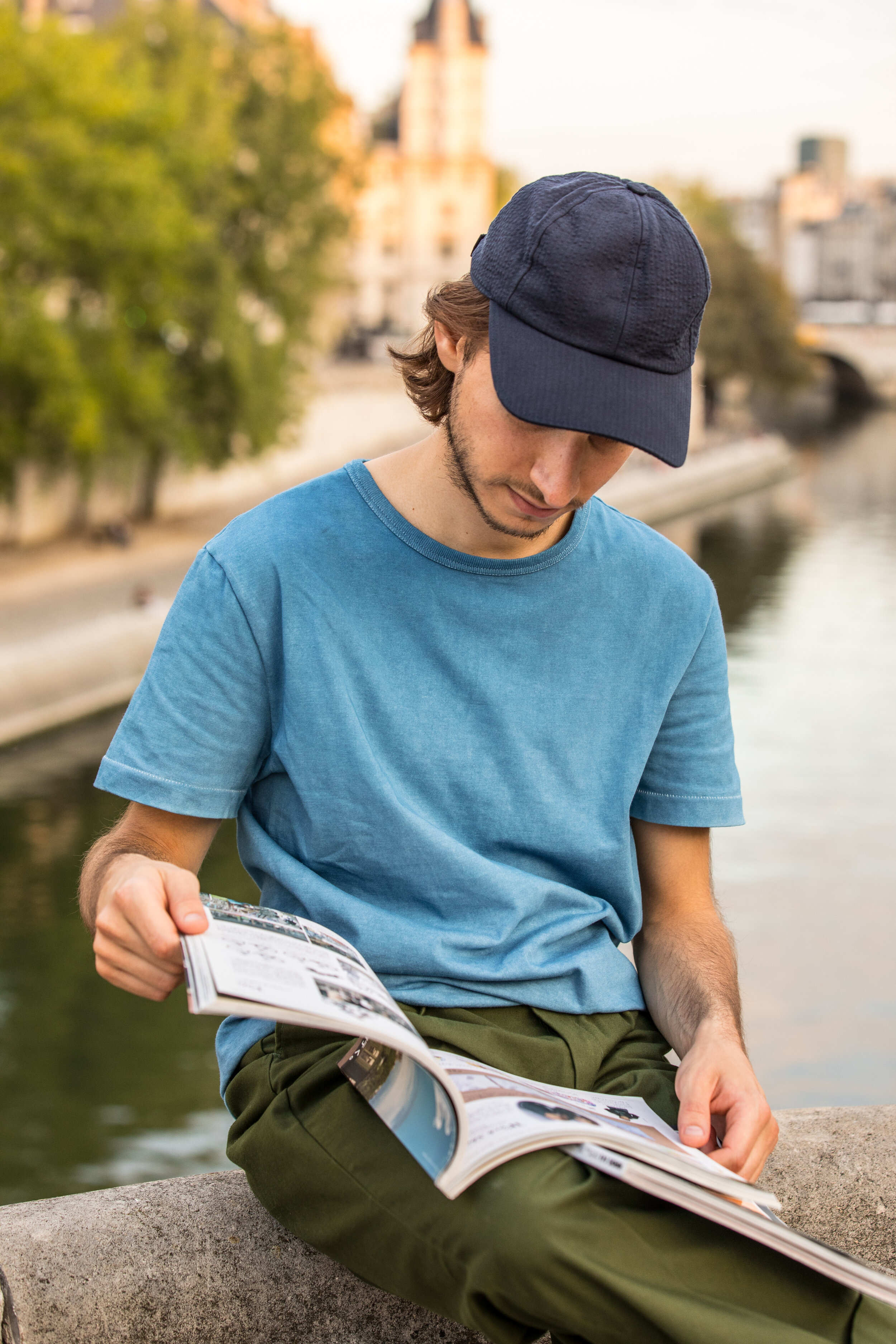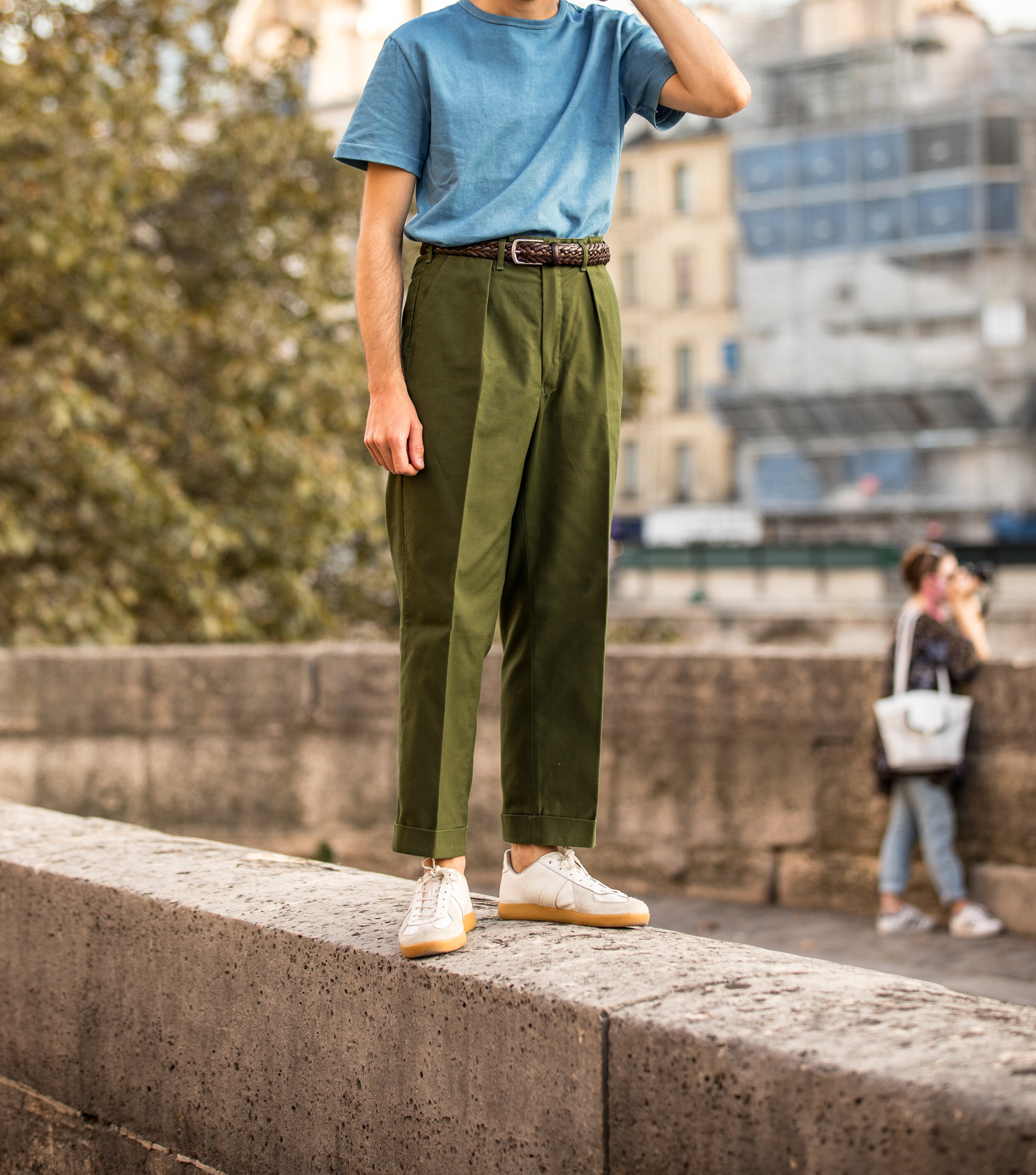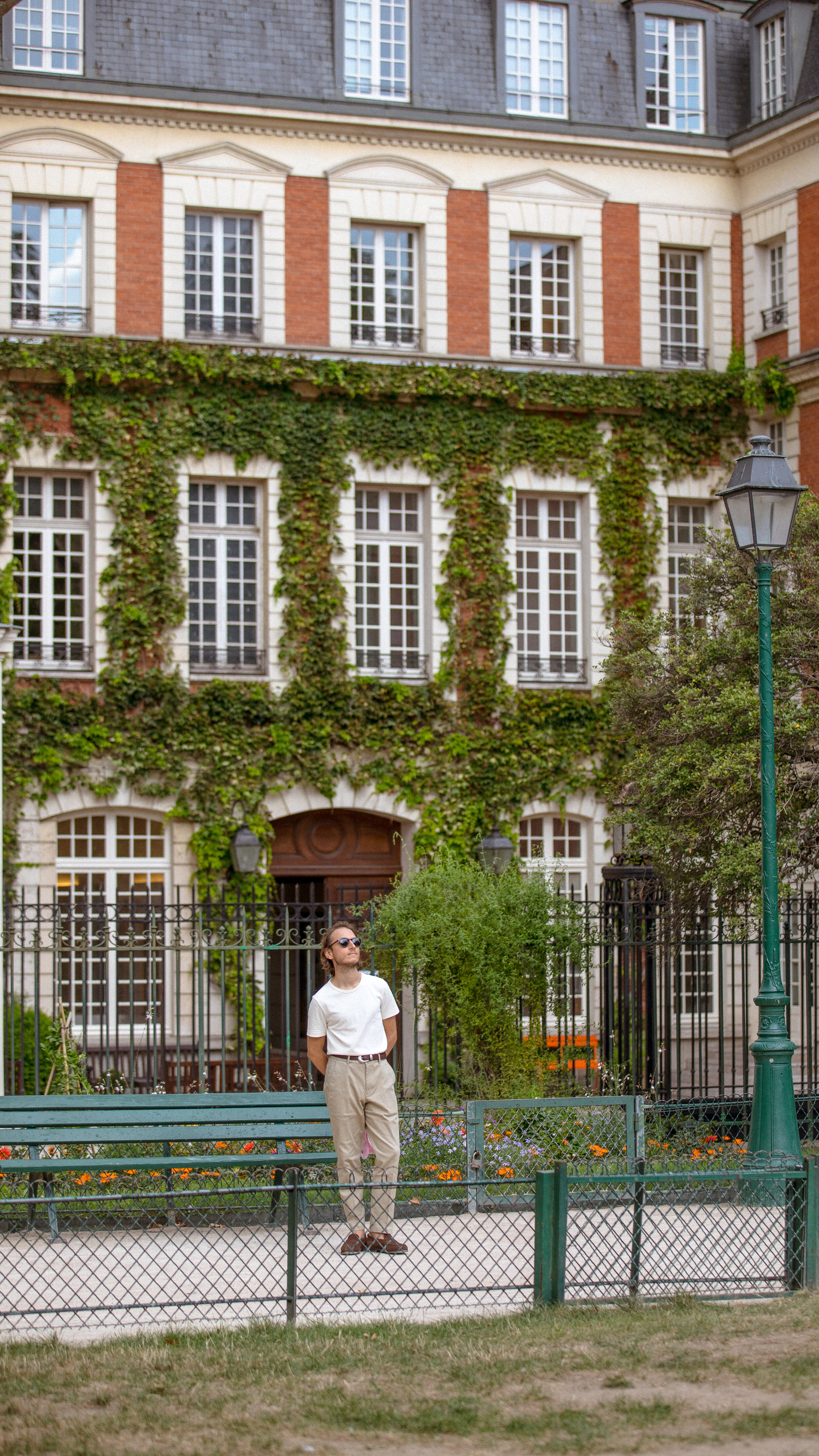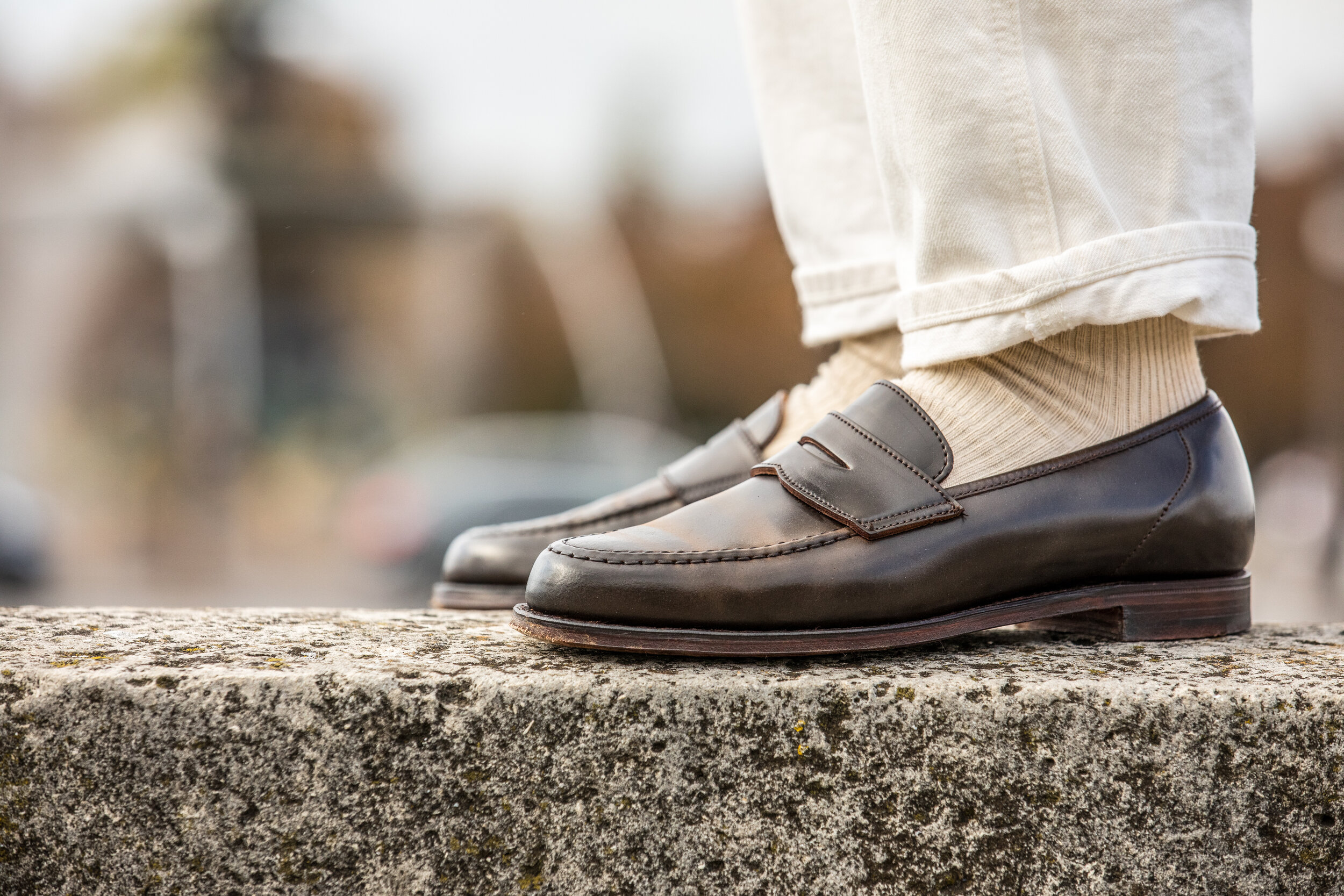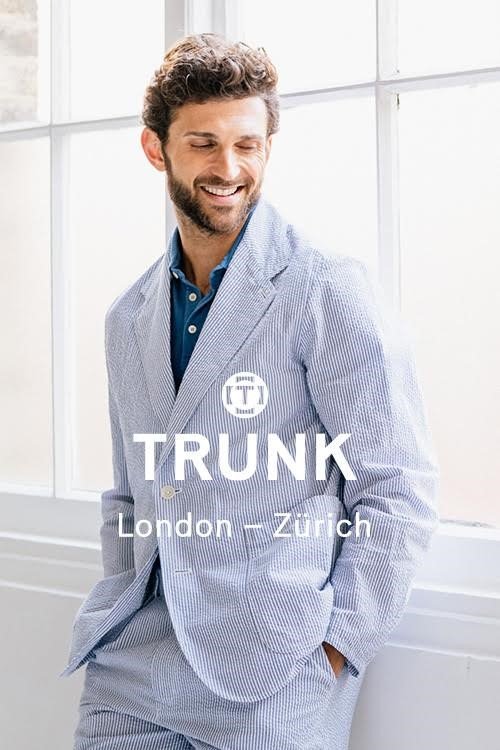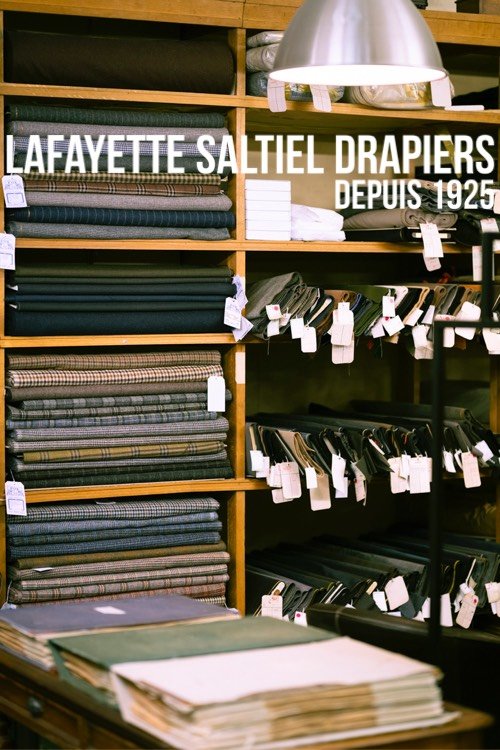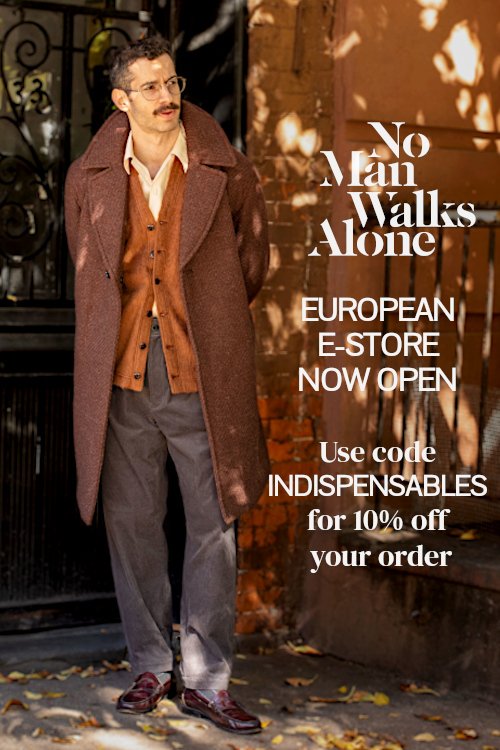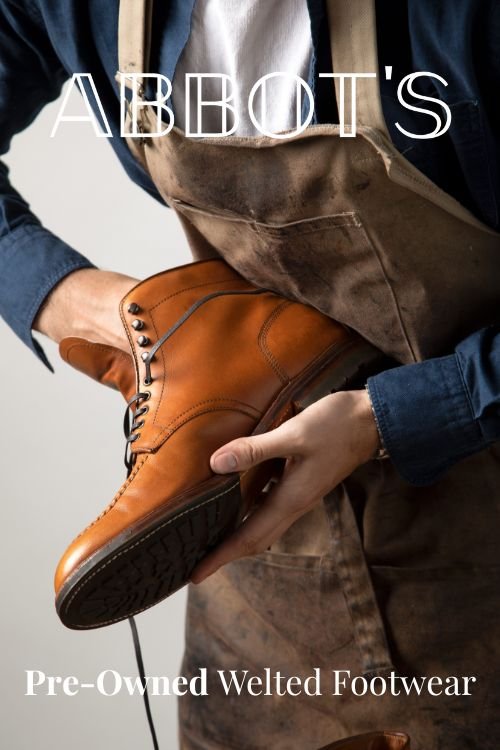Drake's MTO shirts
/Note: At our request, Drake's agreed that we share our experience with their “MTO” program in exchange for the shirts that you will discover in this article.
It has become an unmissable event. Last April, Drake's was in Paris again for their 3-day pop-up and we were invited to join them to discover the new Spring/Summer collection. Always so colorful and with taste, we especially wanted to try the range of “MTO” shirts – or “Made To Order”.
Here is our experience.
Measurements
We were welcomed and taken great care of by the wonderful Faye, a trained tailor who notably trained at Edward Sexton in Savile Row, what an introduction! Not only were we in good hands, but we were also guided by her expert eye.
To begin, Faye measured my collar measurement to determine my shirt size. It was a 14.5 for me. I then put on a template shirt that uses the standard Drake’s sizing. The shirt is cut from a blue oxford cotton with a button-down collar, a style I am very fond of. By the way, although the brand is British, measurements are taken in centimeters and not inches, by tradition! For the record, at Cifonelli it is the opposite, although being a French institution the measurements are taken in inches.
Having put on the sample shirt, one observation is immediately obvious: the shoulders are perfect but the total length of the shirt as well as the sleeves are too long...a problem I encounter again and again in ready-to-wear! This is where the usefulness of the “MTO” offer comes into play. It is then possible to shorten the total length as well as the sleeves. Please note that the fabrics are pre-washed to prevent excessive shrinkage, so the template you try will immediately have the right measurements. A good point when you know that you sometimes have to add more cloth to prevent shrinkage (a good centimeter in general), headaches are thus avoided! The measurements were finally taken quite quickly, let's move on to the style of the shirt.
The style of the shirt
I love button-down collar shirts. My wardrobe is full of them in all colors, blue, pink, yellow, green...all in oxford. I wanted a shirt with this type of collar but in a more formal material. So I opted for the beautiful white poplin from Drake’s with the internal reference “C2117.09”. A classic! The collar is beautiful with a well-designed “rollino” (meaning, the way the collar points shape an “S”). Button-down collar shirts do not mean “no tie” and white color shirts do not mean “ wear a suit”. Do you see where I'm going with this? This type of shirt is, for me, all-purpose.
Faye then shows me the different possible options for the finished shirt. It is thus possible to choose from many options, for instance, the presence or not of a chest pocket (or two!), the style of the cuffs, the back pleats - on the sides or in the middle - and finally the collar. For this shirt, I chose a chest pocket, rounded cuffs and no back pleats. I always prefer to have a cleaner back, which I find more comforatble, none of my shirts have pleats - it's a question of taste first and comfort second.
As for the collars, there are different types and as mentioned above, I chose a button-down. The main question was whether I opted for a fully soft, semi-soft or rigid collar. Although initially I was going for a completely flexible collar, Faye recommended a semi-flexible collar instead, allowing me to wear a tie more easily so that it is well maintained. This is exactly what I did! Finally, the buttons are mother-of-pearl. It is of course possible to choose other materials.
Where the “MTO” offer stands out, is in the possibility of choosing from all of its options listed above. If you've always been frustrated, like me, about not being able to wear a Drake's shirt because the sleeves were too long or too small, this deal fixes that. I would of course point out that it is entirely conceivable to opt for another type of shirt, say for instance, an overshirt.
Another very positive point, if you already know your measurements and size, the MTO offer allows you to create a shirt to your liking, using your Drake’s shirt size. Namely, if you have a type of shirt in mind that the brand does not offer on its site or in store, you can create it! Example: a black linen shirt with two chest pockets with a button-down collar with mother-of-pearl buttons...the example is deliberately far-fetched!
The making of the shirt, Made in the UK
All Drake's shirts are made in their workshop in Chard, in Somerset near London. The Rayner & Sturges factory - founded in 1913 - was acquired by the brand in 2013, which allows it to produce its shirts on British soil while benefiting from more than a century-old know-how. Historically, Drake's is known for being a tie manufacturer, so it made sense to expand its line with shirts. A beautiful tie can only match a beautiful shirt. On this subject, Faye informs us that the shirts are made from 18 pieces sewn together. This gives a little idea of the work behind the finished product. The brand offers the essentials of beautifuly crafted shirts: mother-of-pearl buttons, refined English seams on the sides and above all beautiful fabrics. Drake’s regularly pays tribute to the men and women behind their beautiful products, read more here.
How do we wear our MTO shirts?
If I explained my experience above, Thomas also had the pleasure in living the process but chose a completely different style and fabric that you will discover below.
As for me, I wear this shirt with a Teba jacket from Justo Gimeno in green linen, an olive green silk knit tie from Sozzi Calze, Uniqlo U chinos, Alden LSH penny loafers and Bresciani green linen socks. My Drake's shirt - like all of the brand's button-down collar shirts - features a button at the back of the collar. If it has a practical function to keep the tie in place, it also has an anecdote behind it. It was customary that in the 1950s, students on American campuses used buttoning to signify that they had their hearts taken. Those who unbuttoned it were therefore single, so those who buttoned the back button were in a relationship or married. Although I am in the latter category, I always prefer to keep the back button free, from a pure aesthetic point of view.
Thomas, for his part, opted for a 100% linen Cuban collar shirt. On this subject, we must say that we are quite demanding and often disappointed. Linen fabrics (shirt weight) often lack finesse and density for our taste. Or at least entry-level ones. Just like poplins, this type of fabric does not support ill-made shirts, unlike oxford cloth which is often recommended for inexpensive shirts. Here the fabric selected by Drake’s is ideal. Very light and sufficiently dense, and a very nice deep blue with some marvel.
Unlike me, Thomas started with a shirt from the current collection that he really liked. The options correspond to the latter, namely a soft camp collar, 2 flap pockets, 2 pleats in the back, white mother-of-pearl buttons. It would have been possible to add embroidery with his initials but that would not really have made sense in the case of this very casual shirt.
You will have noticed, it is not Thomas but Mathieu who wears the shirt for this photoshoot, althought it was made for Thomas, our photographer. It must be said that they both have a similar body size and that the shirt has only been altered at the sleeve length, -1cm to be precise. But as explained above, it would also have been possible to change the length of the shirt. It is in this sense that we believe that Made To Order is very useful for many customers, including us. By modifying these 2 parameters (sleeve length and body length of the shirt), you will have a very good result for 80% of people. And unlike Ready-to-Wear, you will have the opportunity to choose your own fabrics, collar and cuffs. The best of both worlds.
Finally, Drake’s is soon organizing a trunk show in Paris from October 4 to 6, an opportunity to meet the wonderful team and touch the fabrics to bring your commission project to fruition. We won't miss a visit! More details soon.
Added bonus, here are some images taken during the first meeting.














